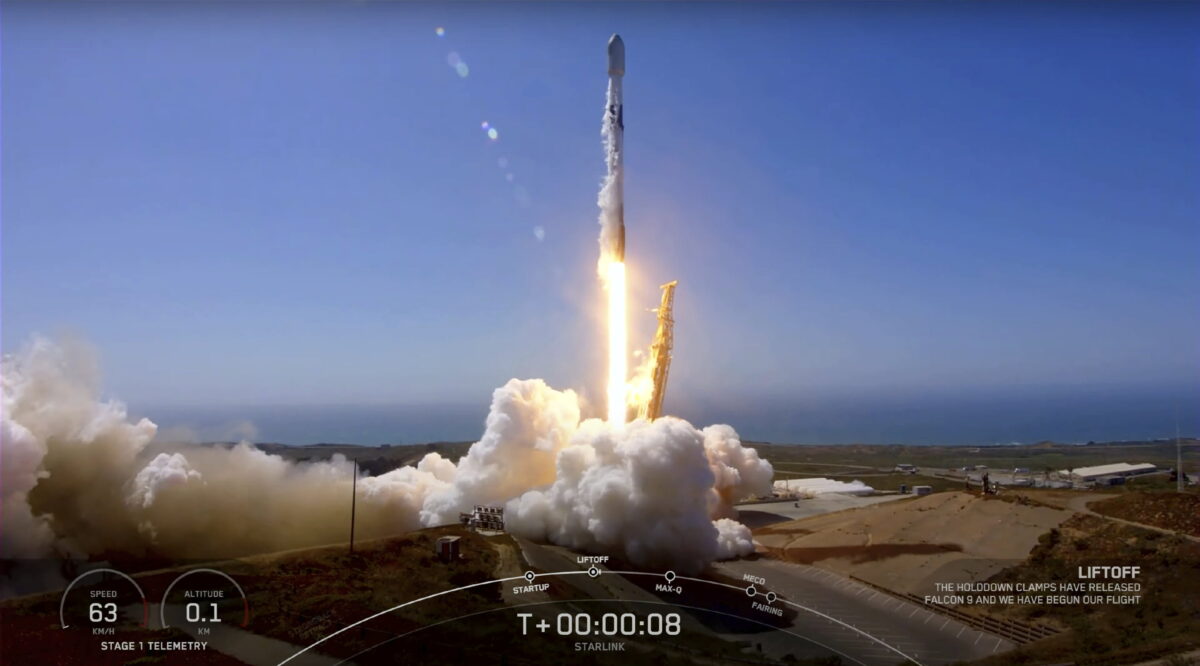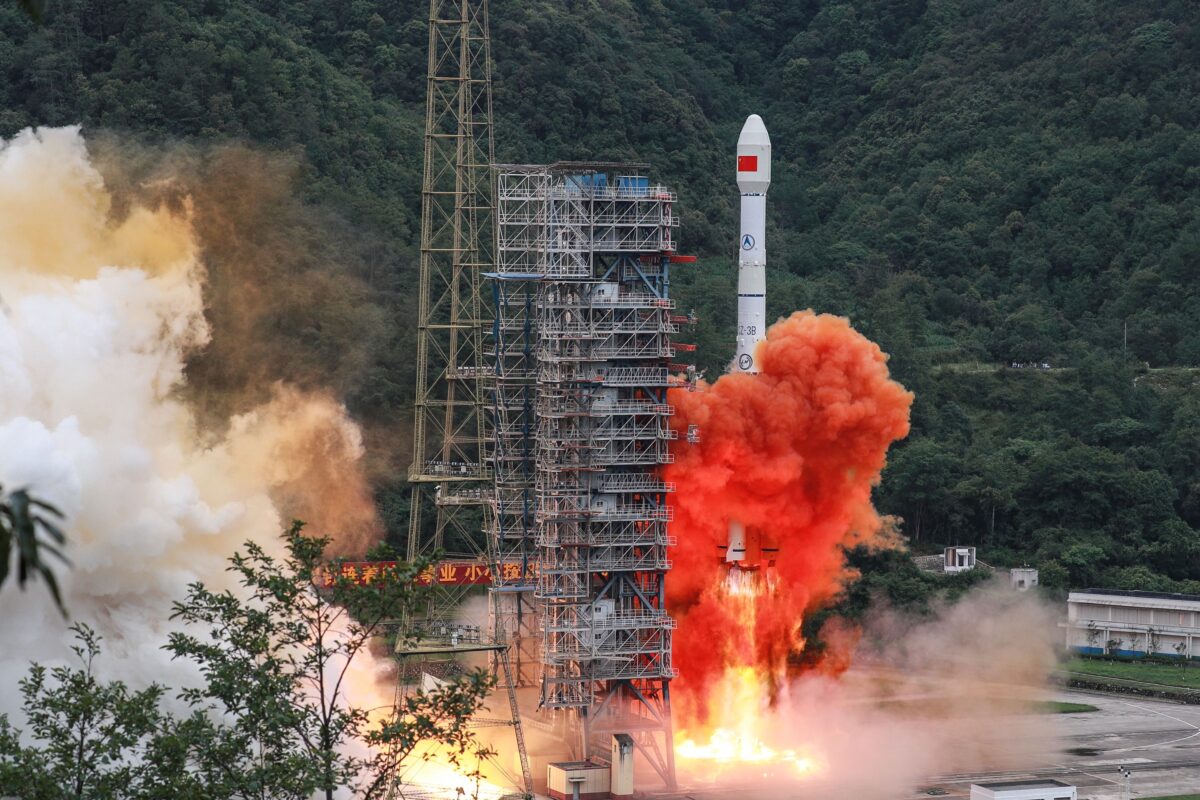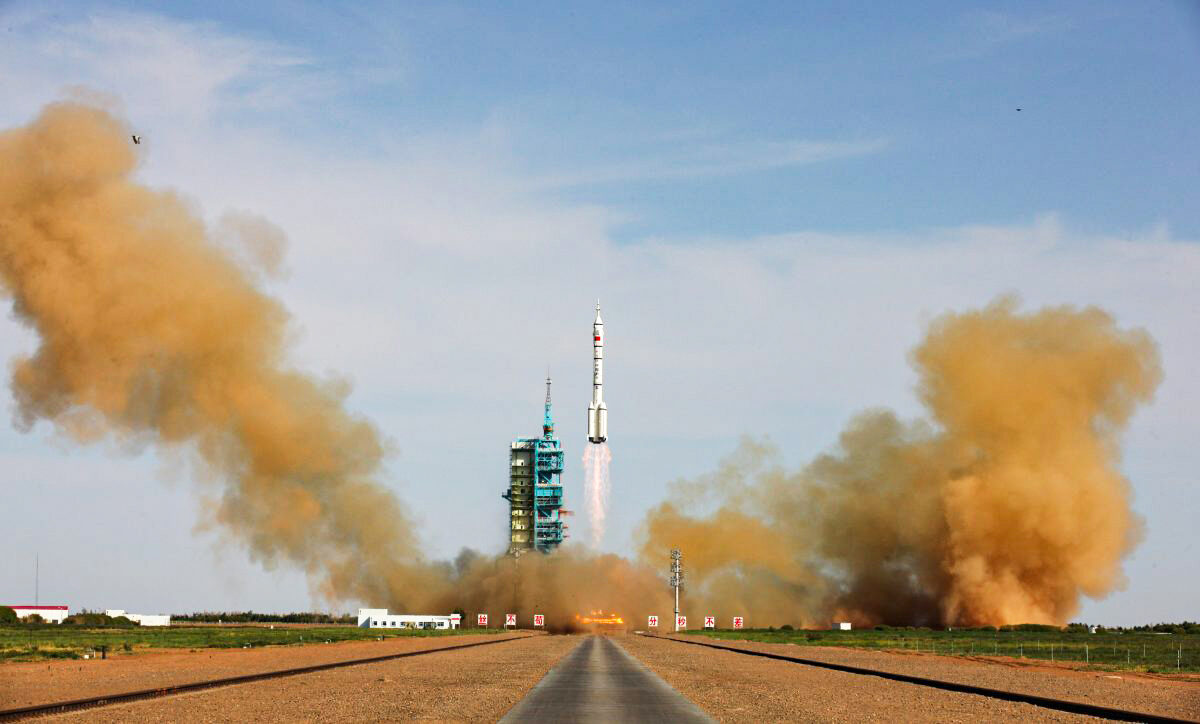By Jessica Mao
Chinese military researchers reportedly view the SpaceX-operated Starlink satellite internet system as a national security threat while suggesting Beijing needs to have the ability to destroy it.
An expert suggests that the PLA has no capability to defeat Starlink.
A Beijing-affiliated military TV program, “Crazy Warfare Show,” recently published an article analyzing the progress of U.S. space exploration technologies with a focus on SpaceX’s Starlink satellite constellation. The report pointed out the military value of Starlink and its critical role in the Russia-Ukraine war while analyzing whether China’s anti-satellite weapons can defeat it.
Crazy Warfare Show is an online military TV program developed by Beijing Junwu Technology Co, a Chinese state-affiliated media company that produces video programs about weaponry, military, and other related themes.
The article said that Starlink provided substantial technical support to Ukrainians in the war with Russia, with tens of thousands of user terminals. And that the support allowed Ukrainian military communications to surpass the Russian army in situational awareness and strike command efficiency on the battlefield.
“[Elon Musk, SpaceX’s CEO] has been cooperating with high-level U.S. military in space technology, and indirectly caused the Russian military to suffer a major loss,” the article said. “[Starlink] is what China will have to face in the future—in a critical battle far more challenging than the Russia-Ukraine war. Therefore, the threat of ‘Starlink’ cannot be ignored.”
Starlink uses thousands of small satellites in orbit about 340 miles above the Earth’s surface to beam down high-speed internet, especially to remote areas, including ones hit by natural calamities or ravaged by war. SpaceX has over 2,000 Starlink satellites orbiting the Earth currently. The company hopes to have 4,425 Starlink satellites in orbit by 2024.

Days after Russia invaded Ukraine in late February, Musk announced that the satellite broadband service would begin providing internet to Ukrainians.
While Starlink delivered an information lifeline to darkened swaths of the war-torn country, including to hundreds of hospitals and clinics, it also served as a link to enable Ukrainian military drones to target Russian tanks and positions more effectively.
On top of internet communications, Starlink broadband satellites can pinpoint locations on Earth to within 8 meters of accuracy, according to an Ohio State University article citing a peer-reviewed journal, similar to that provided by global positioning satellites (GPS).
The constellation of the broadband satellites offers a significant upgrade potential. It can be compatible with various U.S. military technologies, such as obtaining high-precision reconnaissance and navigation capabilities.

In the era of information warfare, Starlink has the potential to interfere with enemy communications or be equipped with unmanned combat weapons, the report said, adding that it could provide the United States with an advantage in space warfare.
However, the article also claimed that Starlink has vulnerabilities and that the system could potentially be paralyzed by electronic warfare or electromagnetic interference, adding that Beijing had made significant progress in related anti-satellite technologies in recent years.
The report urged the Chinese Communist Party (CCP) to prepare for the coordinated development of various anti-satellite weapons and promptly reduce its reliance on traditional GPS in order to prevent losses in critical battles in the future when going up against Starlink.
“[The Chinese in-house] BeiDou Navigation Satellite System must improve its accuracy and [needs an upgrade],” the article said. “If China can enhance its hacking methods, the odds of winning [the space race] will undoubtedly increase.”

Expert: Beijing Has No Chance to Defeat Starlink
Military affairs commentator and expert on China, Sia Luoshan, told The Epoch Times on May 28 that China currently has only a few dozen Beidou Navigation satellites, whereas SpaceX alone has deployed over 2,000 Starlink satellites into orbit. And the sheer disparity in the number of satellites in orbit put China at a significant disadvantage in this race.
“Beijing may lose its global navigation satellites first before taking down Starlink. Losing its positioning capabilities will result in a large number of Chinese military equipment and civilian facilities being paralyzed,” Sia said. “Simply put, Beijing has no chance to defeat Starlink.”
Sia said attacking satellites through computer networks is the standard method that countries attempt before deciding to shoot down a satellite. He added that Beijing’s kinetic-energy series missiles might have the ability to reach satellites’ at certain orbital altitudes.
However, Sia explained that China would have to consider several issues before attempting to take down another country’s satellites.
“First, how would Beijing ensure the survival of its own satellites if it destroys another’s? It may end up paying a much higher price as other nations would also have the ability to take down Chinese satellites,” Sia said. “Second, if Beijing, in fact, shoots down a satellite with its [kinetic energy missiles], the space junk that follows will also hurt Chinese satellites and other spacecraft as the debris remains in orbit. Meanwhile, it will spark international outrage, [resulting in severe sanctions against China].”
Sia suggested there are technologies that use advanced spacecraft to “capture or disable a satellite,” but China is still catching up to the United States in those areas.
China, Russia Seek Weapons to Target ‘Critical’ US Satellites
A recent report by the Defense Intelligence Agency (DIA) found that China and Russia are developing weapons capable of attacking U.S. satellites. The report also found a massive increase in Chinese and Russian space assets over the past several years.
“Space is being increasingly militarized,” the report (pdf) states. “Some nations have developed, tested, and deployed various satellites and some counterspace weapons.”
The report, titled “2022 Challenges to Security in Space,” found that China and Russia’s combined in-orbit space fleets grew by more than 70 percent in the period from 2019 to 2021. That growth, it said, was primarily driven by a desire by the two regimes to “exploit” U.S. technological reliance on space-based infrastructure.

“As more nations and more services depend on space-based capabilities, especially in critical social and economic sectors, such as medical, disaster response, weather forecasting, and financial transactions, the loss or degradation of those capabilities will increasingly disrupt daily life,” the report says.
“Space asset disruption will probably lead to degradation of critical military and intelligence capabilities.”
Command of space is considered vital to winning a modern war between major powers, the report says, because innumerable systems, from GPS to missile warning technologies, rely upon satellites to operate effectively.
For that reason, U.S. space infrastructure has long become the target of Chinese and Russian military and intelligence operations.
Space Force Gen. David Thompson said in November that China and Russia have been conducting reversible cyber and electronic attacks on U.S. space infrastructure “every single day.”
Likewise, Director of National Intelligence Avril Haines testified in March that the cooperation between China and Russia against the United States would only grow in the coming years.
“The loss of space-based communication and navigation services could have a devastating impact on warfighters during a conflict,” DIA Director Lt. Gen. Scott Berrier said in a statement marking the report’s release.
“That’s one of the most serious scenarios anticipated. A secure, stable, and accessible space domain is crucial as China and Russia’s space-based capabilities and electronic-warfare activities continue to grow.”
As such, the report said, efforts by the regimes to undermine or attack U.S. space-based infrastructure were an immediate and long-term threat that would need to be contended with.
“Beijing’s goal is to become a broad-based, fully capable space power,” the report states.
“American efforts to ensure that the space domain remains secure, stable, and accessible are under threat.”
US to Ban Anti-Satellite Missile Tests
Vice President Kamala Harris in April vowed that the United States would not conduct anti-satellite (ASAT) missile tests, citing safety concerns.
It makes the United States the first nation to impose such a ban. Anti-satellite missile testing has been conducted by the United States, China, India, and Russia. It is a military demonstration in which an orbital object is destroyed using a missile system.
“Simply put, these tests are dangerous, and we will not conduct them,” Harris said in her first major policy announcement since overseeing the National Space Council in 2021.
“As of today, the United States commits not to conduct destructive, direct-ascent, anti-satellite missile testing,” Harris said during a visit to California’s Vandenberg Space Force Base. “We are the first nation to make such a commitment. I call on all nations to join us.”
Harris cited the potential danger to astronauts and satellites, referring to a test conducted by China more than a decade ago that created thousands of pieces of debris that are still orbiting the Earth.
“These tests, to be sure, are reckless, as they are irresponsible. These tests could also endanger so much of what we do in space,” she said.
Russia, on Nov. 15, test-launched an anti-satellite missile that struck a defunct Soviet-era spy satellite in low-Earth orbit, creating at least 1,632 pieces of space debris, according to a U.S. Space Force database of orbital objects.
On the other hand, China produced the largest fragmentation group of space debris in a 2007 missile test launch, resulting in about 2,800 fragments orbiting Earth, putting many satellites at risk. In the case of a collision, vital services such as GPS and weather warnings could go down.

The White House said the debris created by these tests now threatens satellites and other space objects vital to all nations’ security, economic, and scientific interests, and increases the risk to astronauts in space.

